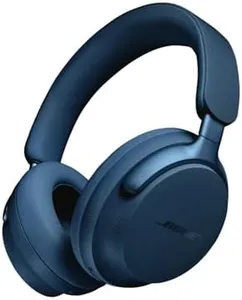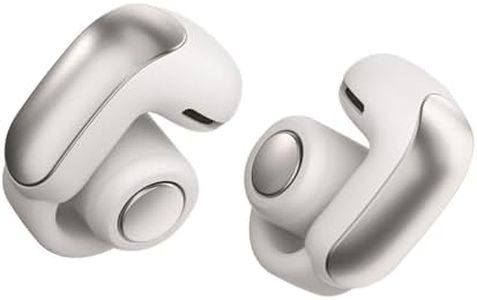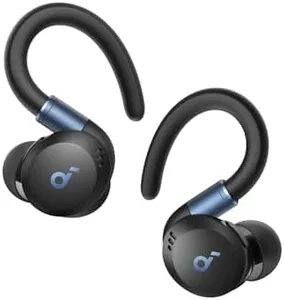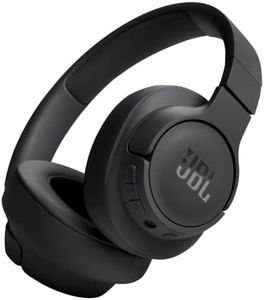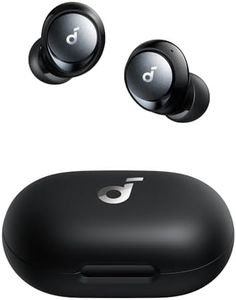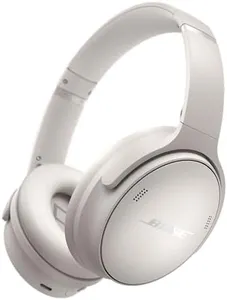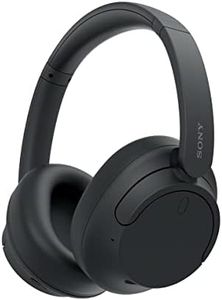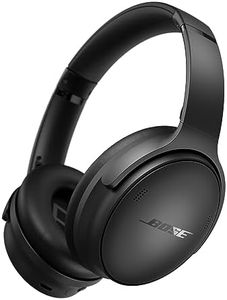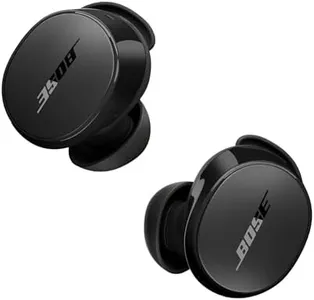We Use CookiesWe use cookies to enhance the security, performance,
functionality and for analytical and promotional activities. By continuing to browse this site you
are agreeing to our privacy policy
10 Best Gym Headphones
From leading brands and best sellers available on the web.By clicking on a link to a third party's website, log data is shared with that third party.
Buying Guide for the Best Gym Headphones
Choosing the perfect headphones for the gym can make a big difference in your workout experience. Instead of going for the most hyped or flashy model, it's important to consider how you'll use them, what environments you'll be in, and what features really matter to you. Good gym headphones should stay put during movement, resist sweat, sound good, and ideally block out distractions. By looking closely at key features, you can find headphones that fit your workout style and boost your motivation.Fit and StabilityFit and stability refer to how well the headphones stay in your ears or on your head during movement. This is important because headphones that slip or wiggle can interrupt your workout and feel uncomfortable. There are a few broad categories: in-ear (earbuds), on-ear, and over-ear designs. Within in-ear types, some have hooks, wings, or fins for extra hold. People who do running or cardio might prefer earbuds with ear hooks or wings, while those who do mostly weightlifting in a stable spot might not need as much security. Consider the activities you do most in the gym, and choose a design that stays secure and comfortable for those movements.
Sweat and Water ResistanceSweat and water resistance describe how well the headphones handle moisture. This is super important at the gym, where sweat, humidity, and even the occasional splash from a water bottle are common. Headphones usually have a rating called IP (Ingress Protection), with numbers and sometimes letters following. Lower levels mean minor resistance, suitable for light sweat, while higher levels (like IPX4 or above) can handle heavier sweat. If you sweat a lot or love intense workouts, look for higher resistance; if your sessions are gentle, basic moisture resistance is enough.
Battery LifeBattery life is how long your headphones can play music on a single charge. This is critical with wireless models—wired headphones don’t need charging. If you usually work out for an hour or two, even shorter battery lives are fine, but if you use your headphones all day (for commuting, calls, etc.), opt for longer battery life. True wireless earbuds often offer 4–10 hours per charge, with extra charges from the case; larger headphones can last much longer. Decide based on how long you want to go between charges.
Noise Isolation or CancellationNoise isolation blocks outside noise by physically sealing your ears, whereas active noise cancellation (ANC) uses technology to cancel out background sounds. For a gym environment, noise isolation or ANC is helpful if you want to focus or block out loud music and chatter. However, if you want to be aware of your surroundings (like in a busy gym or when running outdoors), lighter isolation or a transparency mode may be better. Think about your typical gym environment—if it’s noisy and you crave focus, look for headphones with good isolation or ANC; if safety and awareness are priorities, choose models that let some sound in.
Controls and Ease of UseControls are the ways you play, pause, skip tracks, and adjust volume. This spec is vital because fumbling with tiny buttons mid-workout can be frustrating. Some headphones use touch controls, some have physical buttons, and some combine both. Physical buttons are easier to find by feel, especially with sweaty fingers, while touch controls are more modern but might not register as well when wet. Choose the control style that feels easiest for you to use during exercise—test out both if possible.
Sound QualitySound quality refers to how good the audio sounds—clarity, bass, and overall enjoyment. While gym headphones don’t need studio-level sound, clear audio and a strong bass can make music more motivating. Some headphones are tuned for extra bass, which is great for upbeat workout playlists, while others aim for balanced sound. If music is your main motivator, look for good sound; if you only need background noise or podcasts, you can go with simpler audio.
